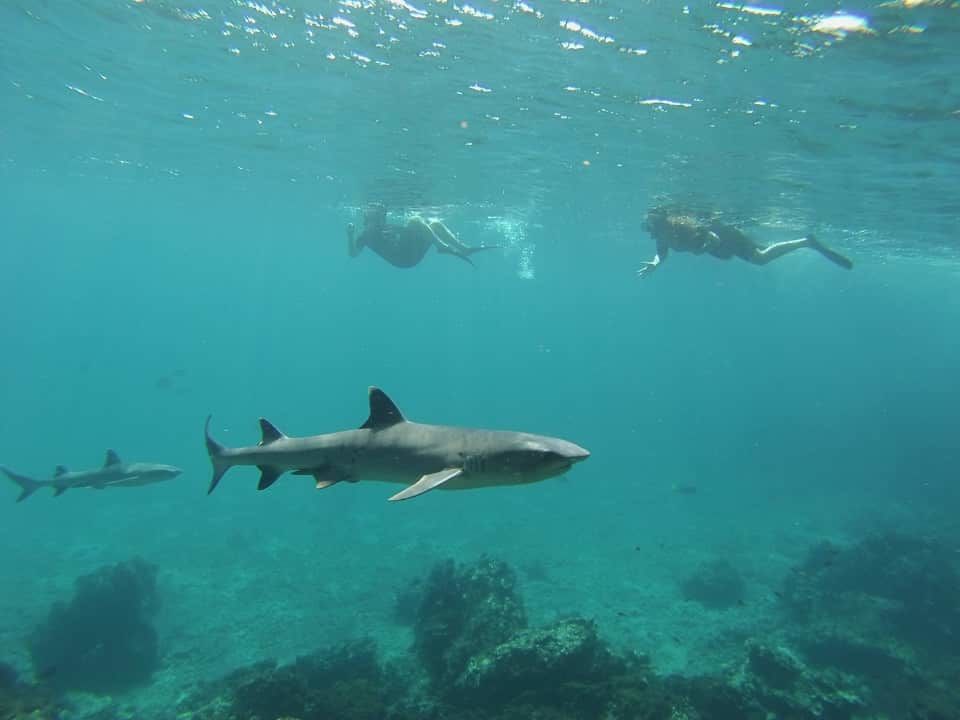
The white tip reef shark
Triaenodon obesus is one of the 400 species of sharks found in the world. They are distinguished from other sharks by the white tip on both their first dorsal fin and upper caudal fins. Like most species of sharks, they are drably counter-shaded. This means that the top and bottom sides are colored differently serving to camouflage the shark from multiple perspectives. The top (the dorsal side) is considerably darker than the belly (the ventral side). When the shark is viewed from above, its dark top surface blends into the dark ocean depths. When viewed from below, the light-colored belly blends in with the light above. This helps the shark hunt in a stealthy manner, enabling it to sneak up on prey undetected.
White tip reef sharks are very common in the Galapagos Islands cruise tours. We often see them resting in shallow waters or, constantly swimming near the shores. Apparently this behavior is related to courtship displays in which males bite females to show their interest. These “love bites” are commonly found near the females’ neck and head. White tip reef sharks can grow up to 2.10 m (6.88 ft); they are curious, gentle and often approach swimmers quite close. This nocturnal shark feeds primarily on crustaceans, mollusks, small fish, and octopus amongst others.
TALK TO A DESTINATION EXPERT

Diego Zapata

Rosa Mena

Sandy Lara

Diego Zapata

Rosa Mena

Sandy Lara
Evolution of sharks
Sharks have 450 millions years of evolution in which they still conserve ancestral but fascinating characteristics such as the dermal denticles covering their skin as opposed to other fish. Their function is to form a protective barrier and to aid for swimming. The exorbitant number of teeth that they produce and re-grow constantly, suggests that over a few years, a shark may grow tens of thousands of teeth!! This explains the abundance of fossils that have been very helpful in science.
The reproductive success on this viviparous fish, consist in their internal fertilization and the production of litters of 1 to 5 sharks. This 60 cm (1.96 ft) young are born large enough to be independent and to search protection from predators such as other species of sharks.
Because they do not have a swimming bladder like other fish, sharks use their large buoyant liver (it constitutes up to 30% of their body mass) and employ a dynamic lift to maintain depth and sink when they are not moving.
During their Galápagos expeditions on board Metropolitan Touring’s vessels or at the Finch Bay Eco Hotel, guests have the great opportunity to encounter these amazing creatures while swimming, snorkeling, riding the zodiacs or strolling along beaches and crevices.

Javier Garcia

Eduardo Silva

Carolina Escobar
START PLANNING YOUR TRIP

Javier Garcia

Eduardo Silva

Carolina Escobar
Get in touch for more
CONTACT US


